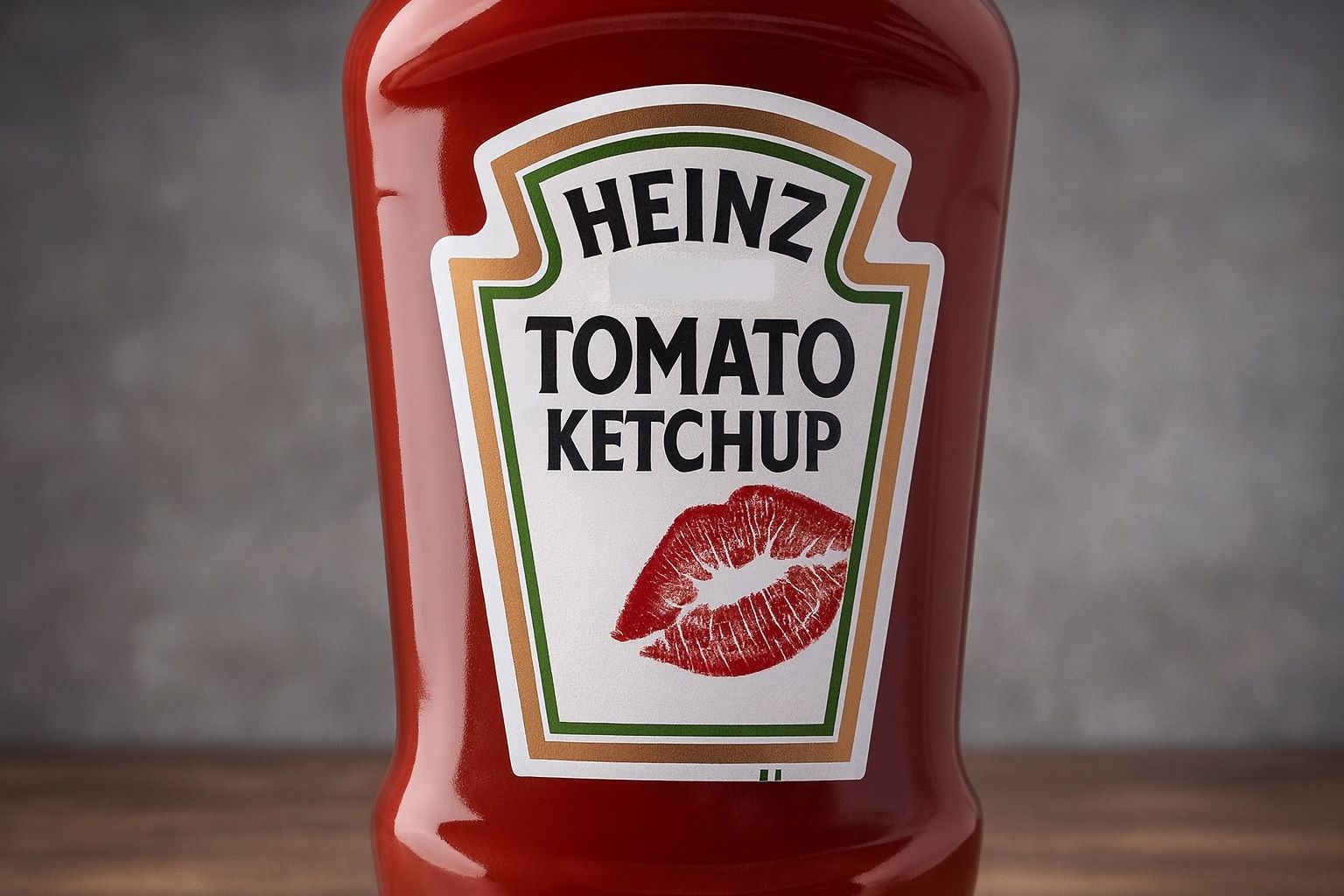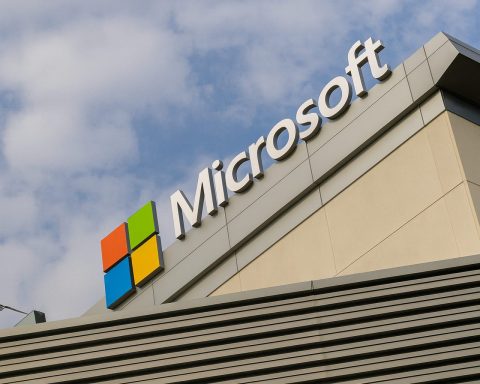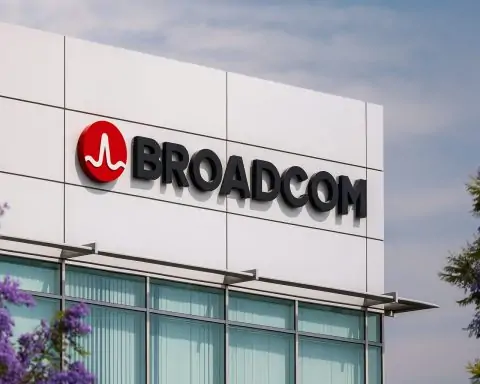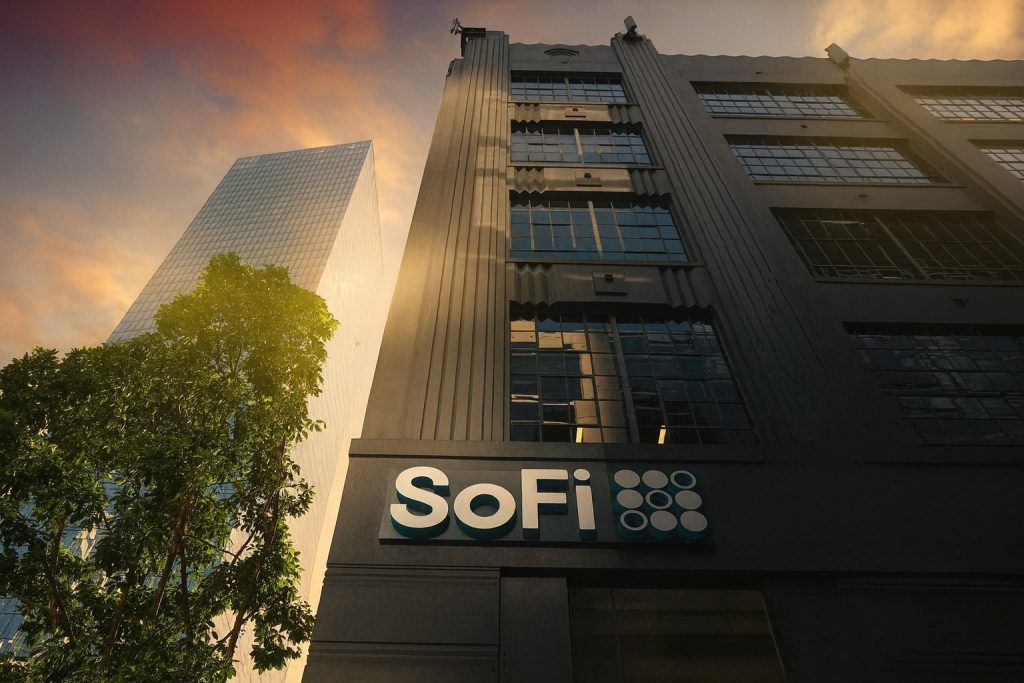- Earnings Beat, Revenue Dip: Kraft Heinz (NASDAQ: KHC) topped profit expectations in Q3 2025 with adjusted earnings of $0.61 per share (vs. $0.57 anticipated) even as revenue slipped ~2% year-over-year to $6.24 billion, just shy of forecasts [1]. The company trimmed its full-year guidance, now targeting $2.50–$2.57 in 2025 earnings per share, down from a prior high-end outlook of $2.67 [2].
- Stock Slumps, 6% Yield: KHC shares hover near a 52-week low around $25 after a year of underperformance, and at current levels the stock’s $0.40 quarterly dividend yields roughly 6.4% [3]. The stock has fallen about 15–20% year-to-date, lagging the broader U.S. packaged-food sector (which is down ~7%) [4], as investors worry about growth and consumer demand.
- Strategic Split in 2026: In September, Kraft Heinz unveiled plans to split into two independent companies by the second half of 2026 – separating its global sauces and condiments business (“Global Taste Elevation Co.”) from its North American grocery staples unit [5]. Management says this tax-free spin-off will unlock value and focus, though notable shareholder Warren Buffett criticized the move for “reversing much of the merger” he helped engineer in 2015 [6].
- Analyst Reactions Mixed: Wall Street’s stance on KHC remains cautious. Deutsche Bank recently cut its price target to $27 and maintained a Hold rating, and the consensus analyst target is only around $29 (about 15% above current prices) with an overall “reduce/hold” rating on the stock [7] [8]. However, Morgan Stanley upgraded Kraft Heinz to Equal-Weight (neutral), arguing that the prior bearish thesis has “largely played out” with the stock now undervalued – noting an ~11% free cash flow yield – and that sales declines may be bottoming out [9] [10].
- Volume Pressures vs. Value Case: Like many food makers, Kraft Heinz is grappling with weak volumes as consumers push back on higher prices. In Q3, organic sales fell 2.5%, driven by a 3.8% drop in North America (volume/mix –4.2% despite +0.4% pricing) [11] [12]. Still, emerging markets showed growth, and the company’s forward P/E ratio has compressed below its 5-year average, signaling a historically cheap valuation [13]. Some analysts see long-term value in this iconic but out-of-favor stock – especially given its 6% dividend and plans to refocus via the 2026 split.
Q3 Earnings: Profit Beats, Sales Slip Slightly 📊
Kraft Heinz delivered a mixed third quarter, posting better-than-expected profits but a slight revenue miss. Net sales for Q3 2025 came in at $6.24 billion, down about 2.3% from a year ago, as the company faced soft consumer demand [14]. Organic sales (which exclude currency and M&A effects) declined 2.5%, reflecting lower volumes across key product lines. Notably, North America – Kraft Heinz’s largest market – saw organic sales tumble 3.8% year-over-year [15]. The company managed only a ~0.4 percentage point uptick in pricing in North America, which was not enough to offset a 4.2 percentage point drop in volume/mix [16]. This indicates that higher prices have dampened demand, as consumers reacted to inflation by cutting back or trading down, a trend seen across the packaged food industry.
By contrast, International markets fared better. In developed markets abroad, organic sales dipped a milder ~1.4%, while emerging markets actually grew – organic sales rose about 4.7% in Q3 [17] [18]. Kraft Heinz highlighted strength in emerging regions where it has been investing in distribution and marketing. The split performance underscores a key challenge: U.S. grocery sales are stagnating, even as the company finds pockets of growth overseas.
On the bottom line, Kraft Heinz reported GAAP net income of $615 million for the quarter, or $0.52 per share [19]. Excluding one-time items, adjusted EPS was $0.61, flat with the prior year but about 7% higher than analyst consensus of $0.57 [20]. The earnings beat was achieved despite the volume weakness, thanks in part to ongoing cost efficiencies and slightly lower tax and interest expenses. However, adjusted operating income fell ~17% in Q3 [21], reflecting higher inflationary costs (ingredients, packaging, etc.) that the modest price increases couldn’t fully cover. Gross profit margins declined about 200 basis points year-on-year, to ~32.3% on an adjusted basis [22], showing continued margin pressure from commodities and supply chain expenses.
Kraft Heinz’s CEO Carlos Abrams-Rivera struck an optimistic tone on the results, noting the top-line trend improved versus the first half of 2025. “Our third quarter results reflect a modest year-over-year improvement in our top-line performance relative to the first half of the year,” Abrams-Rivera said, adding that targeted investments in marketing and product quality are helping “deliver superior and affordable products” to retain customers [23]. He acknowledged the environment “remains challenging” but pointed to early benefits from the company’s brand rejuvenation and cost-saving efforts.
Importantly, Kraft Heinz slightly lowered its outlook for the full year. After Q3, management updated 2025 guidance to anticipate a 3.0%–3.5% organic net sales decline (worse than the ~2% decline previously expected) and trimmed its adjusted EPS range to $2.50–$2.57 (from a prior $2.51–$2.67) [24] [25]. In cutting the outlook, the company cited slower growth in certain emerging markets (notably continued declines in Indonesia) and persistent pressure in U.S. retail channels [26]. In other words, the volume softness seen in Q3 is prompting a more cautious view of Q4 and beyond. Additionally, Kraft Heinz now sees its adjusted operating profits for 2025 falling 10–12% year-on-year (a deeper drop than the –5% to –10% previously forecast) [27], implying that inflation and higher costs are eroding margins more than initially hoped.
Despite the downbeat revenue picture, Kraft Heinz’s cash flow remains a bright spot. Year-to-date through Q3, the company generated $3.1 billion in operating cash flow, up 10% from the prior year, and free cash flow of $2.5 billion, up over 23% [28]. Management noted improved working capital and lower one-off payouts (like lapped compensation) are boosting cash generation, allowing Kraft Heinz to continue returning capital to shareholders. Through September, the company had paid $1.8 billion back to shareholders via dividends and buybacks [29]. This included the rich dividend (currently $0.40 per quarter) and some opportunistic share repurchases earlier in the year. Robust free cash flow is critical for Kraft Heinz as it navigates high debt levels from the 2015 merger; encouragingly, net leverage has been maintained and even slightly improved in 2025, according to the company.
Stock Under Pressure: Multi-Year Lows and Big Yield 📉💰
In spite of the earnings beat, investor reaction has been muted to negative, and Kraft Heinz’s stock continues to languish. On October 29, the day of results, KHC shares slipped in early trading. The stock recently notched a new 12-month low of $24.83 per share [30] and remains not far above that level. At around $25, Kraft Heinz has lost roughly one-quarter of its market value over the past year, and the stock is down an estimated 18% in 2025 so far – dramatically underperforming the S&P 500 and even trailing most consumer staples peers. (For context, the broader U.S. food & beverage sector is down ~7% year-to-date [31], meaning Kraft Heinz has lagged its cohort by a wide margin.) The company’s market capitalization now sits near $30 billion [32], a stark comedown from its peak valuation shortly after the Kraft-Heinz merger.
One side effect of the stock’s slide is an eye-popping dividend yield. Kraft Heinz pays an annualized $1.60 per share dividend, which at the current stock price equates to a yield around 6% – roughly double the yield of the S&P 500 and significantly above most rival food companies. (For instance, General Mills yields about 5% [33], and many consumer staples stocks yield in the 3–4% range.) Such a high yield partly reflects investors’ skepticism about growth – the market is essentially valuing KHC as a slow or no-growth entity – but it also underscores a potential value opportunity if the business stabilizes. The dividend appears to be well-supported by cash flow for now (with a payout ratio in the 60% range of 2025 expected earnings). Notably, management reaffirmed that even after its planned corporate split, the aggregate dividend is expected to be maintained across the two new companies [34]. That commitment suggests confidence in the underlying cash generation of Kraft Heinz’s brands, though rating agencies and some analysts have cautioned that sustaining the payout will require delivering on cost cuts and renewed sales growth post-separation.
Market sentiment around Kraft Heinz remains cautious. The stock’s slump to multiyear lows has come amid a string of analyst downgrades and generally lackluster quarterly results prior to this Q3. As of mid-October, the consensus analyst rating on KHC was tilted toward Hold/Sell. According to MarketBeat data, only one analyst has a Strong Buy on the stock, versus 16 Holds and 3 Sell-equivalent ratings, giving an average recommendation essentially at “Reduce” [35]. The average 12-month price target across Wall Street is about $29–30 per share [36], implying modest upside of ~15% from current levels – but also reflecting limited enthusiasm for a big rebound. Several investment banks have pared back their targets in recent weeks. For example, Deutsche Bank cut its target from $28 to $27 (Hold rating) after Kraft Heinz’s investor day, citing ongoing volume weakness and a lack of near-term catalysts [37]. Barclays in September lowered its target to $26 (Equal Weight), and Stifel trimmed theirs to $28 (Hold) [38]. These moves have contributed to the stock’s pressure, as has a generally risk-averse market environment for consumer staples stocks in a rising interest rate climate.
It’s worth noting that value-focused investors are taking notice of Kraft Heinz’s depressed valuation. At ~9.5 times forward earnings and ~1.2 times sales [39] [40], KHC trades at a discount to its historical multiples and to many peers. One recent analysis highlighted Kraft Heinz as a classic contrarian play for patient investors, noting the stock’s “low forward P/E vs. its 5-year average” and its appeal to Warren Buffett-style value investing principles [41]. (Berkshire Hathaway still owns a significant stake in KHC, around 26%, though it has written down the value in past years.) The tantalizing combination of a high dividend yield and bargain valuation multiples suggests that if Kraft Heinz can get back to steady growth, today’s share price could prove a long-term buying opportunity. However, that “if” looms large – the company will need to show that it can reinvigorate sales (or at least halt the declines) and navigate cost pressures without further eroding margins or brand equity.
Big Move: Kraft Heinz to Split in Two 🏭✂️🏭
Perhaps the most consequential news for Kraft Heinz’s future is its plan to break up the company. In early September, management announced a bold strategy to separate Kraft Heinz into two standalone public companies through a tax-free spin-off [42]. This move, expected to be completed in the back half of 2026, is designed to “accelerate profitable growth and unlock shareholder value” [43] by creating two more focused businesses.
Under the plan, Kraft Heinz will split along product lines into:
- Global Taste Elevation Co. – A new company housing Kraft Heinz’s global “Taste Elevation” portfolio, primarily condiments, sauces, and internationally-focused brands. This includes iconic names like Heinz (ketchup and sauces), Philadelphia cream cheese, and Kraft Mac & Cheese, among others. This global foods company would have about $15.4 billion in annual sales (2024 pro-forma) and is positioned for growth in emerging markets and foodservice channels [44]. Approximately 75% of its sales would come from sauces, spreads, and seasonings – categories where Kraft Heinz sees potential to “drive industry-leading growth” globally [45].
- North American Grocery Co. – The remaining company focused on classic grocery products in the U.S., Canada, and similar markets. This would include much of the traditional Kraft branded portfolio: cheeses (e.g. Kraft Singles), cold cuts (Oscar Mayer), convenient meals (Lunchables), and other staples. With about $10.4 billion in sales and strong cash-flow generation, this entity is intended to be a stable, high-margin business with leading market shares in its categories [46]. It will be led by current CEO Carlos Abrams-Rivera after the separation, and is expected to prioritize operational efficiency and steady cash returns (about 75% of its sales come from #1 or #2 category share brands) [47].
Executives argue that each new company will have greater strategic focus and flexibility to pursue its distinct opportunities [48]. For instance, the global sauces business can concentrate on international expansion and faster innovation in taste-centric products, without being constrained by the needs of the U.S. refrigerated foods arm. Meanwhile, the North American Grocery company can streamline its supply chain and marketing for mature brands, and potentially pursue acquisitions or partnerships in its space. “By separating into two companies, we can allocate the right level of attention and resources to unlock the potential of each brand,” said Kraft Heinz’s board chairman Miguel Patricio (the former CEO) [49]. The goal is that this unlocking of value leads to better performance than the current conglomerate structure, which management admits has been “challenging to allocate capital effectively [and] prioritize initiatives” across such a diverse portfolio [50].
Investor reaction to the split news has been mixed. On one hand, Wall Street generally applauds spin-offs as a way to surface hidden value – the sum-of-the-parts in theory being greater than the current whole. Each new company could be valued on its own merits, and possibly attract different shareholder bases (e.g. a growth-oriented investor might prefer the sauces/condiments co., while income/value investors might favor the stable grocery co.). Notably, Morgan Stanley expects the separation to “provide support for shares and limit downside risk”, as investors begin to price in the distinct growth profiles of the new entities [51]. The mere anticipation of the spin could help KHC stock, by shifting the narrative toward future potential rather than past struggles. In fact, the spin-off announcement in early September gave KHC a short-lived pop on the news, though broader market weakness soon pushed shares down again.
However, there are also skeptics of the breakup. Legendary investor Warren Buffett – whose Berkshire Hathaway is Kraft Heinz’s largest shareholder – openly expressed disappointment about the plan, noting it “reverses much of the merger [of Kraft and Heinz] he orchestrated a decade ago” [52]. Buffett’s concern likely centers on whether splitting up will truly create value or simply undo the scale benefits that were supposed to come from combining Kraft and Heinz in 2015. The merger was initially pitched on synergy savings and one-stop scale; unwinding it could risk those advantages. Moreover, splitting into two smaller firms might lead to higher costs (each company needs its own management, systems, etc.) and there’s no guarantee the market will reward either new stock with a higher multiple. There’s also execution risk – separating supply chains, IT systems, and thousands of products across two companies is a complex, multi-year endeavor. In fact, Moody’s put Kraft Heinz’s debt ratings on review for downgrade after the announcement, citing uncertainties around the separation and potential dissynergies (lost efficiencies) it could bring [53]. The company insists it will maintain investment-grade credit ratings for both entities and that the current combined dividend will be intact [54] [55], but credit analysts will be watching closely as details emerge.
For now, management says the separation is on track and will likely close in H2 2026 [56]. Carlos Abrams-Rivera will continue as CEO of Kraft Heinz until the split, then lead the North American Grocery Co., while a search will be underway for a chief executive to helm the Global Taste Elevation Co. The next year and a half will involve detailed planning under a dedicated Separation Committee [57]. Investors can expect periodic updates on the process, including how assets, liabilities, and personnel will be divided. Notably, Kraft Heinz aims to execute the spin-off without disrupting its current performance – Abrams-Rivera emphasizes they will “continue to operate as ‘one Kraft Heinz’ throughout the separation process” [58] to avoid distracting employees and partners. The success of this break-up strategy will ultimately be judged by whether the two new companies can outperform what Kraft Heinz might have done as a single entity.
Analysts’ Take: Caution with a Hint of Optimism 💡🤔
With Kraft Heinz at a crossroads – a business reset (spin-off) on the horizon and fundamental performance under scrutiny – financial analysts and experts are parsing the latest news to forecast what’s next for KHC stock. The consensus: caution prevails, but there are glimmers of optimism for the long term if the company’s plans bear fruit. Here’s a roundup of key perspectives:
- Consensus Ratings and Targets: As mentioned, Wall Street’s current consensus on Kraft Heinz is lukewarm. MarketBeat data shows an average price target of around $29 and a consensus rating roughly equivalent to Hold/Underperform [59] [60]. Many analysts have effectively sidelined the stock pending clearer signs of a turnaround. The sentiment reflects concerns about declining sales and the execution risk of the separation. Even those who see upside potential temper it with acknowledgment of Kraft Heinz’s challenges (high debt, sluggish categories like cold cuts and cheese, etc.). It’s telling that despite trading near multi-year lows, only one out of 20+ analysts currently rates KHC a outright Buy. In other words, the stock is cheap, but most experts aren’t ready to pound the table until results improve.
- Morgan Stanley – Bear Thesis “Played Out”: In a notable shift, Morgan Stanley upgraded KHC in September from Underweight (sell) to Equal-Weight (neutral). The Morgan Stanley team believes the worst of the bearish case is behind the company: “the previous bearish thesis has largely played out, with Kraft Heinz shares down 15% year-to-date” and consensus earnings forecasts already cut to more realistic levels [61]. Essentially, a lot of bad news (inflation, volume declines, write-downs) is already baked into the stock’s price. Morgan Stanley notes KHC now looks undervalued, pointing out its strong free cash flow yield (~11%) and dividend support [62]. Crucially, they see early signs of stabilization – scanner retail data and Kraft Heinz’s own statements hint that Q2 2025 may have been the bottom for organic sales declines, with trends leveling out in Q3 [63]. If true, this inflection could set the stage for modest growth resumption in 2026 after a tough 2024-25 period. Despite upgrading, Morgan Stanley isn’t outright bullish; they maintain a degree of caution, predicting continued headwinds into 2026. In particular, they warn that higher input costs (commodities, packaging) and the need for continued brand investment will likely pressure 2026 earnings – especially in the first half of 2026 [64]. So, while the downgrade cycle may be over, Kraft Heinz still has heavy lifting to do to hit its profit goals in a post-inflation environment. Morgan Stanley set a price target of $29 on the stock, roughly in line with peers, and essentially argues KHC is fairly valued for now – but could perform better than expected if the company exceeds its conservative guidance or if the market begins to price in benefits from the 2026 breakup.
- Mizuho Securities – Neutral, Execution Improving: Mizuho is another firm taking a middle-of-the-road stance. The brokerage recently reiterated a Neutral rating on KHC (downgrading from a prior Buy earlier in the year), with a price target in the high-$20s [65]. Mizuho’s analysts acknowledge that Kraft Heinz has shown “improvements in execution” – for example, the company is managing pricing and productivity better now than a year ago, and it’s starting to reinvigorate brands with new marketing. They note that renovation and innovation are priorities, with a slate of new product launches and marketing campaigns hitting in the second half of 2025 [66]. These include revamps of classic products (like reformulating ingredients to clean labels) and introducing new flavors/formats in categories like sauces and Lunchables. Such efforts are expected to bolster demand and modernize the portfolio. However, Mizuho remains on the sidelines because “ongoing portfolio challenges” persist – a polite way of saying that some of Kraft Heinz’s businesses (e.g. cold cuts, powdered drinks, etc.) are in structural decline or face heavy competition. The firm wants to see sustained organic growth and market share traction before turning bullish. In the meantime, they view the stock as fairly valued, balancing its high yield and stable cash flows against its growth issues.
- Value Investors & Buffettology: It’s impossible to discuss Kraft Heinz without noting the perspective of value investors, given the stock’s ties to Warren Buffett. While Buffett himself may be unhappy with the spin-off strategy, his broader philosophy seems to still apply: KHC has strong brands and a generous dividend, but also has to adapt to changing consumer tastes. Some analysts draw comparisons to Buffett’s approach – buying when others are fearful. A recent ts2.tech market commentary cited Kraft Heinz’s low forward P/E relative to its history as a reason it made a list of “Buffett stocks to consider now,” emphasizing its reasonable valuation and still-iconic brands [67]. The caveat, and something Buffett himself often stresses, is that value traps abound in consumer staples if the business fails to reignite. For Kraft Heinz to truly qualify as a Buffett-worthy bargain, it will need to stabilize revenues and prove that its brands still have pricing power without losing too many customers. The upcoming split could be the catalyst that management uses to drive that change – essentially simplifying the story for each new company so they can be more nimble and growth-oriented in their respective arenas.
- Comparisons to Peers: Analysts also compare Kraft Heinz’s situation to similar companies. General Mills, Campbell Soup, and Kellogg (which itself split into two companies this October) have all faced slowing sales after the pandemic boom and have had to rely on price increases to prop up revenues. Many of those stocks have also fallen in 2023–2025, though not as sharply as KHC. The difference is that Kraft Heinz’s portfolio is perceived as more exposed to secularly declining categories (like processed cheese and lunch meats) and the company had the overhang of past mismanagement (recall that in 2019 Kraft Heinz took a massive goodwill write-down). That said, Kellogg’s recent split into a snacks company (Kellanova) and a cereal company (WK Kellogg Co.) offers a precedent – Kellogg aimed for the same rationale of focus and growth, and while it’s early days, investors have been cautiously optimistic on that move. Kraft Heinz’s split is on a larger scale, but if it succeeds, analysts say it could re-rate the stock closer to peers. Right now, KHC’s forward earnings multiple is a discount to General Mills (~12x) and Kellogg’s snack business (~14x). If each new Kraft Heinz spin-off can command even a market-average multiple (say 14–15x earnings), it would imply decent upside from here.
Outlook: Cautious Hope as Kraft Heinz Reshapes 🍝🔮
Looking ahead, Kraft Heinz faces a pivotal year in 2026, with significant changes that could determine the trajectory of its stock. In the immediate term, the company’s priority is stabilizing sales. Management insists that organic sales will improve sequentially – meaning the declines should lessen quarter by quarter – and they expect pricing to have a roughly flat to slightly positive contribution going forward [68] [69]. This suggests no further big price hikes (as commodity inflation has eased), but also an effort to avoid price cuts that could undermine brand value. Instead, KHC is banking on product innovation and marketing to revive volume growth. Initiatives like expanding Lunchables into school cafeterias, launching new sauce varieties (e.g. Heinz combo condiments and international flavors), and reformulating some products to meet health trends are all part of this push. If these efforts successfully win back consumers, Kraft Heinz could surprise to the upside in 2024–2025 with flatter volumes or even a return to slight growth, especially as it laps easier comparisons from this year.
Another major factor will be cost management. The company has aggressively cut costs under past management, sometimes at the expense of brand support. The current leadership is taking a more balanced approach – still driving “best-in-class productivity” (efficiency savings) but reinvesting much of those savings back into marketing and R&D [70]. The goal is to improve margins and grow the business, not simply cut to boost short-term profits. So far in 2025, inflation has been the spoiler, but if cost pressures abate (e.g. dairy, meat, and packaging costs normalize), Kraft Heinz’s margins could get a lift in 2026. The company’s updated outlook for 2025 now bakes in about a 100 bps decline in gross margin [71]; any upside to that (through cost cuts or mix improvements) would flow to the bottom line. Furthermore, KHC expects stronger free cash flow conversion (100%+ of net income) this year [72], which could give it more room to reduce debt or buy back shares next year – both supportive of equity value.
Of course, the elephant in the room is the 2026 separation. Through 2025, management will be simultaneously running the business and executing the complex carve-out tasks for the spin. Investors will be watching for any signs that the spin-off might unlock value sooner – for instance, if Kraft Heinz decides to sell off a non-core brand or if an activist investor gets involved to push things along. There’s also the question of who will lead the Global Taste Elevation Co.; a high-profile hire (a seasoned food industry exec) could boost confidence in that new company’s prospects. Conversely, any delays or cost overruns related to the separation could spook the market.
For shareholders, the next few quarters may continue to be bumpy. The stock is largely in a “show me” zone: it’s inexpensive, but needs to demonstrate that the business isn’t in terminal decline. Encouragingly, Q3’s earnings beat and maintained dividend show that Kraft Heinz is not standing still – it’s cutting checks to shareholders and modestly exceeding its own forecasts, even in tough conditions. The 5%+ dividend yield pays investors to wait, and many of Kraft Heinz’s brands (Heinz ketchup, Kraft cheese, etc.) remain staples in households, suggesting a baseline of earnings power that’s not going to disappear overnight. The coming year will reveal whether those brands can be leveraged into renewed growth via better focus and innovation, or whether the company will continue treading water in a changing consumer landscape.
In summary, Kraft Heinz stock today presents a high-risk, potentially high-reward profile. The current news flow – a solid Q3 beat, a lowered but still achievable outlook, and a transformative break-up plan – paints a picture of a company at an inflection point. Analysts are mostly in “wait-and-see” mode, but a few see a glint of a turnaround story amid the gloom. For the general public and investors, the takeaway is that Kraft Heinz is doing the hard work of reinvention (internally through innovation and externally through restructuring) to try to recapture its former glory. Whether that results in a savory outcome for shareholders will depend on execution in the months ahead. Keep an eye on consumer trends (are shoppers coming back to Kraft Heinz products?), margin trajectories, and any further commentary from big names like Buffett or 3G Capital on the split. Those signals will likely determine if KHC’s stock finally finds a bottom and begins a sustainable rebound, or if it remains stuck in the pantry while the market feasts elsewhere.
Sources: Key financial figures and analyst commentary sourced from Kraft Heinz’s Q3 2025 earnings release and conference call, Associated Press business reports, company press statements, and expert analysis by Zacks, GuruFocus, MarketBeat, and Investing.com [73] [74] [75] [76] [77] [78] [79] [80] [81]. These include direct quotes and data on earnings, forecasts, the planned spin-off, and Wall Street’s latest ratings and price targets for KHC. All information is current as of October 29, 2025, and reflects the most recent disclosures and market reactions.
References
1. www.timesunion.com, 2. www.timesunion.com, 3. www.marketbeat.com, 4. www.investing.com, 5. www.gurufocus.com, 6. www.investing.com, 7. www.marketbeat.com, 8. www.marketbeat.com, 9. www.investing.com, 10. www.investing.com, 11. news.kraftheinzcompany.com, 12. news.kraftheinzcompany.com, 13. ts2.tech, 14. www.gurufocus.com, 15. news.kraftheinzcompany.com, 16. news.kraftheinzcompany.com, 17. news.kraftheinzcompany.com, 18. news.kraftheinzcompany.com, 19. www.timesunion.com, 20. www.timesunion.com, 21. www.gurufocus.com, 22. news.kraftheinzcompany.com, 23. news.kraftheinzcompany.com, 24. news.kraftheinzcompany.com, 25. news.kraftheinzcompany.com, 26. news.kraftheinzcompany.com, 27. news.kraftheinzcompany.com, 28. news.kraftheinzcompany.com, 29. news.kraftheinzcompany.com, 30. www.marketbeat.com, 31. www.investing.com, 32. www.gurufocus.com, 33. www.macrotrends.net, 34. news.kraftheinzcompany.com, 35. www.marketbeat.com, 36. www.marketbeat.com, 37. www.marketbeat.com, 38. www.marketbeat.com, 39. www.gurufocus.com, 40. www.gurufocus.com, 41. ts2.tech, 42. news.kraftheinzcompany.com, 43. news.kraftheinzcompany.com, 44. news.kraftheinzcompany.com, 45. news.kraftheinzcompany.com, 46. news.kraftheinzcompany.com, 47. news.kraftheinzcompany.com, 48. news.kraftheinzcompany.com, 49. news.kraftheinzcompany.com, 50. news.kraftheinzcompany.com, 51. www.investing.com, 52. www.investing.com, 53. www.investing.com, 54. news.kraftheinzcompany.com, 55. news.kraftheinzcompany.com, 56. news.kraftheinzcompany.com, 57. news.kraftheinzcompany.com, 58. news.kraftheinzcompany.com, 59. www.marketbeat.com, 60. www.marketbeat.com, 61. www.investing.com, 62. www.investing.com, 63. www.investing.com, 64. www.investing.com, 65. www.ainvest.com, 66. www.investing.com, 67. ts2.tech, 68. www.nasdaq.com, 69. www.nasdaq.com, 70. news.kraftheinzcompany.com, 71. news.kraftheinzcompany.com, 72. news.kraftheinzcompany.com, 73. www.timesunion.com, 74. www.timesunion.com, 75. www.gurufocus.com, 76. www.gurufocus.com, 77. www.marketbeat.com, 78. www.investing.com, 79. www.investing.com, 80. www.investing.com, 81. ts2.tech







